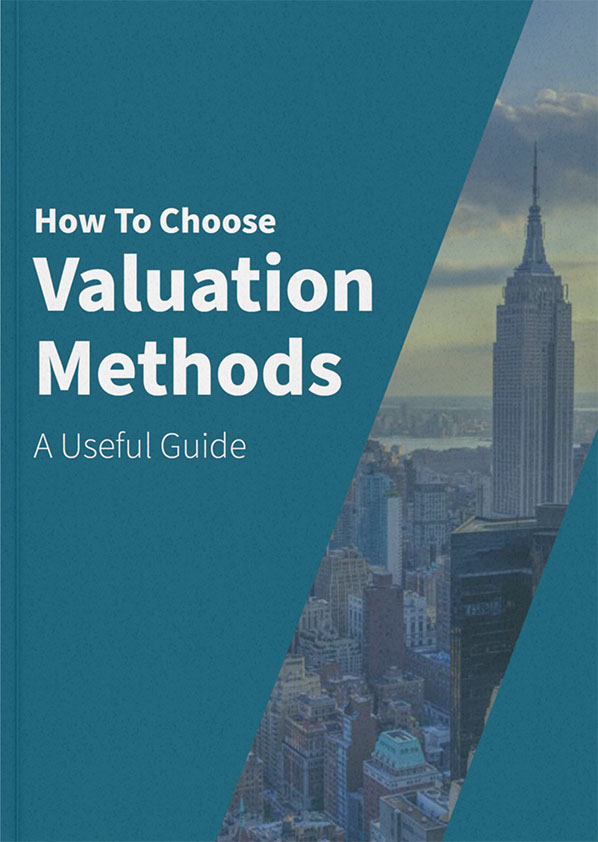Terminal Growth Rate – A Simple Explanation with Formula

The Terminal Growth Rate is often used in valuation models and financial projections, but what is it and why is it important? Below we aim to provide a straightforward explanation of what the Terminal Growth Rate is and its significance in financial analysis.
What is the Terminal Growth Rate? The Terminal Growth Rate is the estimated pace at which a company is expected to continue expanding after the initial projected growth period. Also known as the long-term growth rate, it is the growth rate of a company’s free cash flows beyond a certain forecast period. Broadly speaking, it’s the rate at which you predict the company to grow in the future. In financial modeling and valuation, analysts project cash flows for a specific period, typically 5 or 10 years, and then assume a stable, perpetual growth rate for subsequent years. This stable perpetual growth rate is the Terminal Growth Rate.
That’s a short summary, but we’ll take you through the explanation step by step below.
Key Takeaways:
- The terminal growth rate is the estimated pace at which a company is expected to continue expanding after the initial projected growth period.
- It reflects the steady rate at which the company’s free cash flows are anticipated to grow beyond the period covered by the initial forecasts.
- It’s used in financial modeling and valuation to estimate the company’s long-term value. In particular, the Terminal Growth Rate is used in a DCF analysis to help calculate the Terminal Value.
- The Terminal Growth Rate and the Terminal Value are important figures in valuations, because they usually represent a significant contributor to the final valuation estimate.
- Different industries have varying Terminal Growth Rates based on growth potential and market maturity.
- There are several ways to estimate the Terminal Growth Rate, including historical growth rates, industry averages, economic projections, and qualitative factors.
- Conservative assumptions are important to avoid overestimating the company’s future growth.
- Sensitivity analysis assesses the impact of growth rate changes on valuation.
A Simple Explanation of Terminal Growth Rate
Financial specialists make predictions about a company’s cash flows for a certain period, usually the next 5 or 10 years. But after this period they need to estimate how much the company’s cash flows will keep growing beyond. This is the Terminal Growth Rate. To come up with the Terminal Growth Rate, these experts might look at the company’s historical growth rates, consider industry trends, and evaluate how the overall economy is performing.
The Terminal Growth rate is used as a crucial part of the widely used valuation technique Discounted Cash Flow analysis, to determine that Terminal Value. The Terminal Value, derived using the Terminal Growth Rate, is combined with the present value of cash flows during the forecast period to calculate the total value of the company. It’s crucial to make conservative estimates of the Terminal Growth Rate, and be cautious about being too optimistic, as even small changes in this rate can have a significant impact on the company’s value.
Explaining Free Cash Flow: Cash flow is like the lifeblood of a business (or your personal finances). It covers tracking the money that comes in and goes out. When more money flows into the business than goes out, you have positive cash flow. Free Cash Flow is a specific type of cash flow that focuses on the cash left after the company has covered all its necessary expenses and capital investments needed to maintain and grow the business. It’s the cash that a company can use for other purposes, like paying off debts, returning money to shareholders, or investing in new projects.
Terminal Growth Rate Formula
The Terminal Growth Rate is typically incorporated into the Perpetuity Formula used in DCF analysis to determine the present value of future cash flows. The formula is as follows:
Terminal Value = Cash Flow in the Last Forecast Year * (1 + Terminal Growth Rate) / (Discount Rate – Terminal Growth Rate)
The Terminal Value represents the value of the company’s cash flows beyond the forecast period, and the Discount Rate is the rate used to discount future cash flows back to their present value.
Note: It’s important to understand that this is one of the commonly used methods to calculate terminal value, especially in more simplified DCF models. However, for a nuanced valuation, particularly for capital-intensive or rapidly growing companies, the normative free cash flow method might be more appropriate. In such cases, analysts often adjust the terminal value calculation using normative free cash flow. This results in the formula:
Terminal Value = Normative Free Cash Flow * (1 + Terminal Growth Rate) / (Discount Rate – Terminal Growth Rate)
Normative Free Cash Flow=NOPAT from the previous year×(1+g)−g×Capital Expenditure from the previous year
This adjustment ensures that the terminal value calculation aligns more closely with the company’s typical operations.
Calculating the Terminal Growth Rate:
There are various methods to estimate the Terminal Growth Rate. One approach is to use the industry average growth rate or the country’s economic growth rate, depending on the company’s market and geographical location.
Another approach is the historical growth rate analysis. This method involves analyzing a company’s historical growth rate over an extended period, typically five to ten years, and using it as a proxy for the Terminal Growth Rate.
Analysts may also consider macroeconomic factors, industry trends, and management forecasts to arrive at a reasonable estimate.
When estimating the Terminal Growth Rate, it’s not only beneficial but imperative to align it with broader economic forecasts, especially for companies closely tied to overall economic conditions. For instance, if an emerging industry has seen high growth rates recently, projecting a Terminal Growth Rate higher than the broader economy can result in unrealistic valuations. Over an extended period, this would mean the company would outgrow the economy itself, a scenario that’s logically implausible.
Where is the Terminal Growth Rate Used?
Beyond valuations, the Terminal Growth Rate is used in various areas within the realm of finance and business decision-making. Some of the key uses include:
Investment Decisions:
Investors use the Terminal Growth Rate to evaluate the long-term growth potential of a company before making investment decisions. A higher Terminal Growth Rate may signal a more attractive investment opportunity.
Strategic Planning:
Companies incorporate the Terminal Growth Rate in their strategic planning to set realistic long-term financial goals and assess the sustainability of their competitive advantage.
Budgeting and Financial Forecasting:
The Terminal Growth Rate assists companies in projecting future cash flows and making financial forecasts for budgeting purposes.
Dividend Policy:
For mature companies with stable cash flows, the Terminal Growth Rate helps determine an appropriate dividend policy. The rate at which dividends can grow sustainably is linked to the Terminal Growth Rate.
Mergers and Acquisitions:
In merger and acquisition analyses, the Terminal Growth Rate plays a role in estimating the future cash flows and potential synergies of the combined entity.
Cost of Equity and Capital:
The Terminal Growth Rate is used to calculate the cost of equity in the Dividend Discount Model (DDM) and the cost of capital in the Weighted Average Cost of Capital (WACC) formula.
Credit Risk Assessment:
Credit rating agencies and lenders may consider the Terminal Growth Rate when assessing a company’s long-term creditworthiness and ability to meet debt obligations.
Scenario Analysis:
The Terminal Growth Rate is used in scenario analysis to explore different growth rate assumptions and their impact on a company’s value and performance.
Assumptions of the Terminal Growth Rate:
Several key assumptions underlie the Terminal Growth Rate calculation. These include the assumption that the company will achieve steady and sustainable growth beyond the forecast period, that it will maintain its competitive advantage, and that market conditions will remain relatively stable.
Steady and Sustainable Growth:
The Terminal Growth Rate assumes that the company will experience consistent and sustainable growth beyond the forecast period. This implies that the company will continue to expand and generate increasing cash flows without any significant disruptions or adverse events.
Competitive Advantage:
The assumption of a Terminal Growth Rate is predicated on the company maintaining its competitive advantage over time. This competitive edge can stem from unique products, innovative technologies, strong brand recognition, or effective cost leadership. If the company loses its competitive edge, the Terminal Growth Rate may not be applicable, and growth prospects could change.
Stable Market Conditions:
The calculation of the Terminal Growth Rate assumes that the market and economic conditions will remain relatively stable over the long term. Economic volatility, changes in consumer preferences, technological shifts, or disruptive market forces could impact a company’s ability to sustain growth.
General Consideration for the Terminal Growth Rate:
Conservative Assumptions:
When estimating the Terminal Growth Rate, it is essential to be conservative and avoid overly optimistic projections. Small changes in the Terminal Growth Rate can significantly impact a company’s valuation.
Sensitivity Analysis:
Due to the significance of the Terminal Growth Rate in valuation models, analysts often perform sensitivity analysis to assess the impact of varying growth rate assumptions on the overall valuation.
Industry-Specific Considerations:
Different industries may have varying Terminal Growth Rates due to their growth potential, market maturity, and risk profiles. Industries experiencing rapid technological advancements, like the technology sector, may have higher growth rates, while mature industries may have lower growth rates.
Growth Potential:
Industries with high growth potential, such as technology, renewable energy, or healthcare, may experience higher Terminal Growth Rates due to emerging opportunities and increasing demand for their products or services.
Market Maturity:
Mature industries, like utilities or traditional consumer goods, tend to have lower Terminal Growth Rates. These industries often experience slower growth as they reach saturation points in the market.
Risk Profiles:
Industries with higher perceived risks, such as biotechnology or startups in competitive markets, may have lower Terminal Growth Rates as investors demand higher returns to compensate for uncertainty.
Execution Failures in Growth Projections:
While it’s essential to project growth based on past successes and industry standards, it’s equally crucial to factor in potential execution failures. Such failures could be due to a variety of reasons including, but not limited to, market changes, internal challenges, or external pressures. Relying solely on historical growth without accounting for possible failures might lead to an overly optimistic Terminal Value. It’s pertinent to adjust the Terminal Growth Rate or the Terminal Value directly to encapsulate potential failures.
In certain cases, especially for rapidly growing or capital-intensive companies, the cash flow from the final projected year might not be representative of ‘normal’ operations. In such situations, analysts adjust the terminal value calculation using normative free cash flow.
How to Find the Terminal Growth Rate:
Estimating the Terminal Growth Rate involves careful analysis and consideration of various factors. Common methods include:
Historical Growth Rates:
Analysts may examine the company’s historical growth rates over a significant period to identify trends and extrapolate a reasonable Terminal Growth Rate. However, relying solely on historical data may not fully capture future prospects.
Industry Averages:
Comparing a company’s growth prospects with industry averages can help gauge its competitiveness and potential long-term performance.
Economic Growth Projections:
Analysts may consider macroeconomic indicators and economic forecasts to estimate the Terminal Growth Rate, particularly when the company’s performance is closely linked to broader economic conditions.
Qualitative Factors and Management Forecasts:
Incorporating qualitative factors, like management’s strategic plans or market outlook, can provide valuable insights into the company’s long-term growth potential.




